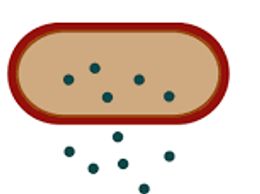Helping create safer environments one home at a time.
Indoor environmental health is essential for maintaining overall well-being, as individuals typically spend a significant portion of their time indoors. Understanding factors such as air quality, exposure to toxins, humidity levels, and the presence of allergens can significantly impact physical and mental health. Knowledge of these aspects allows for the implementation of strategies to reduce harmful exposures, enhance comfort, and promote healthier living and working environments.
What is mold?
What is mold?
What are mycotoxins?
What are mycotoxins?

Mold is a type of fungi that grows in multicellular filaments called hyphae, forming a network known as mycelium. It thrives in damp, warm, and humid conditions, and can be found both indoors and outdoors. Mold plays a crucial role in the decomposition of organic matter, but it can also produce allergens, irritants, and toxic substances that may negatively impact health, especially in sensitive individuals. Common types of mold include Aspergillus, Penicillium, and Stachybotrys, often referred to as "black mold."
What are mycotoxins?
What are mycotoxins?
What are mycotoxins?

Mycotoxins are toxic compounds produced by certain species of mold as they grow and reproduce. These secondary metabolites can pose significant health risks to humans and animals when ingested. Exposure to mycotoxins can lead to a variety of adverse health effects, including acute poisoning, immune system suppression, and long-term diseases such. Common types of mycotoxins include aflatoxins, ochratoxins, and zearalenone, which are associated with specific molds like Aspergillus and Fusarium species.
What are exotoxins?
What are mycotoxins?
What are endotoxins?

Exotoxins are potent, biologically active proteins produced and secreted by certain bacteria, primarily Gram-positive bacteria, that can cause disease in the host by disrupting normal cellular functions. Unlike endotoxins, which are part of the bacterial cell wall and are released upon cell lysis, exotoxins are actively released into the surrounding environment and can trigger a wide range of harmful effects, including inflammation, tissue damage, and interference with nerve signaling. Common examples include the botulinum toxin produced by Clostridium botulinum and diphtheria toxin from Corynebacterium diphtheriae.
What are endotoxins?
What are endotoxins?
What are endotoxins?

Endotoxins are heat-stable toxins that are part of the outer membrane of the cell wall of Gram-negative bacteria. They are composed of lipopolysaccharides (LPS) and are released when the bacteria die or are destroyed. Endotoxins can trigger strong immune responses in the host, leading to fever, inflammation, and in severe cases, septic shock. Unlike exotoxins, which are secreted by living bacteria, endotoxins are not actively secreted and are considered less potent but can still have significant physiological effects.
What are VOC's?
What are endotoxins?
What is bacteria?

Volatile organic compounds (VOCs) are organic chemicals that have a high vapor pressure at room temperature, leading to their evaporation into the air. These compounds are commonly found in various household products such as paints, cleaning agents, and air fresheners, as well as in industrial emissions. VOCs can contribute to air pollution and have health effects, ranging from eye and throat irritation to more severe long-term impacts, making their regulation and management important for public health and environmental safety.
What is bacteria?
What are endotoxins?
What is bacteria?

Bacteria are single-celled microorganisms that are prokaryotic, meaning they lack a nucleus and membrane-bound organelles. They are among the most abundant and diverse forms of life on Earth, found in various environments, including soil, water, and the human body. Bacteria can be beneficial, such as those involved in digestion and nutrient cycling, or harmful, causing diseases in humans, animals, and plants. They reproduce asexually through binary fission and can vary in shape, size, and metabolic functions.
Educational Videos
What you should know
Understanding Home Health
IICRC S520 Standard 2024 update
This website uses cookies.
We use cookies to analyze website traffic and optimize your website experience. By accepting our use of cookies, your data will be aggregated with all other user data.